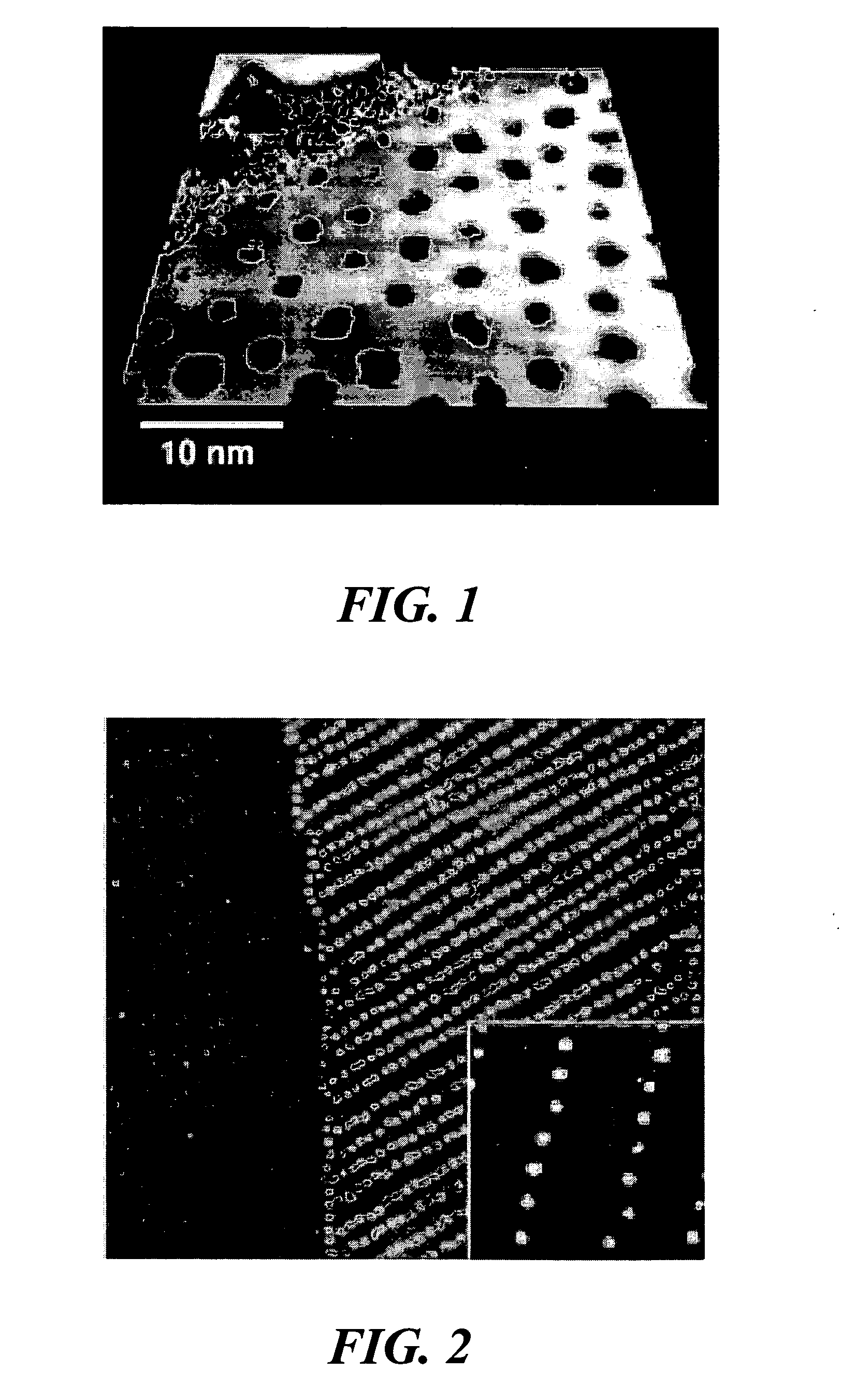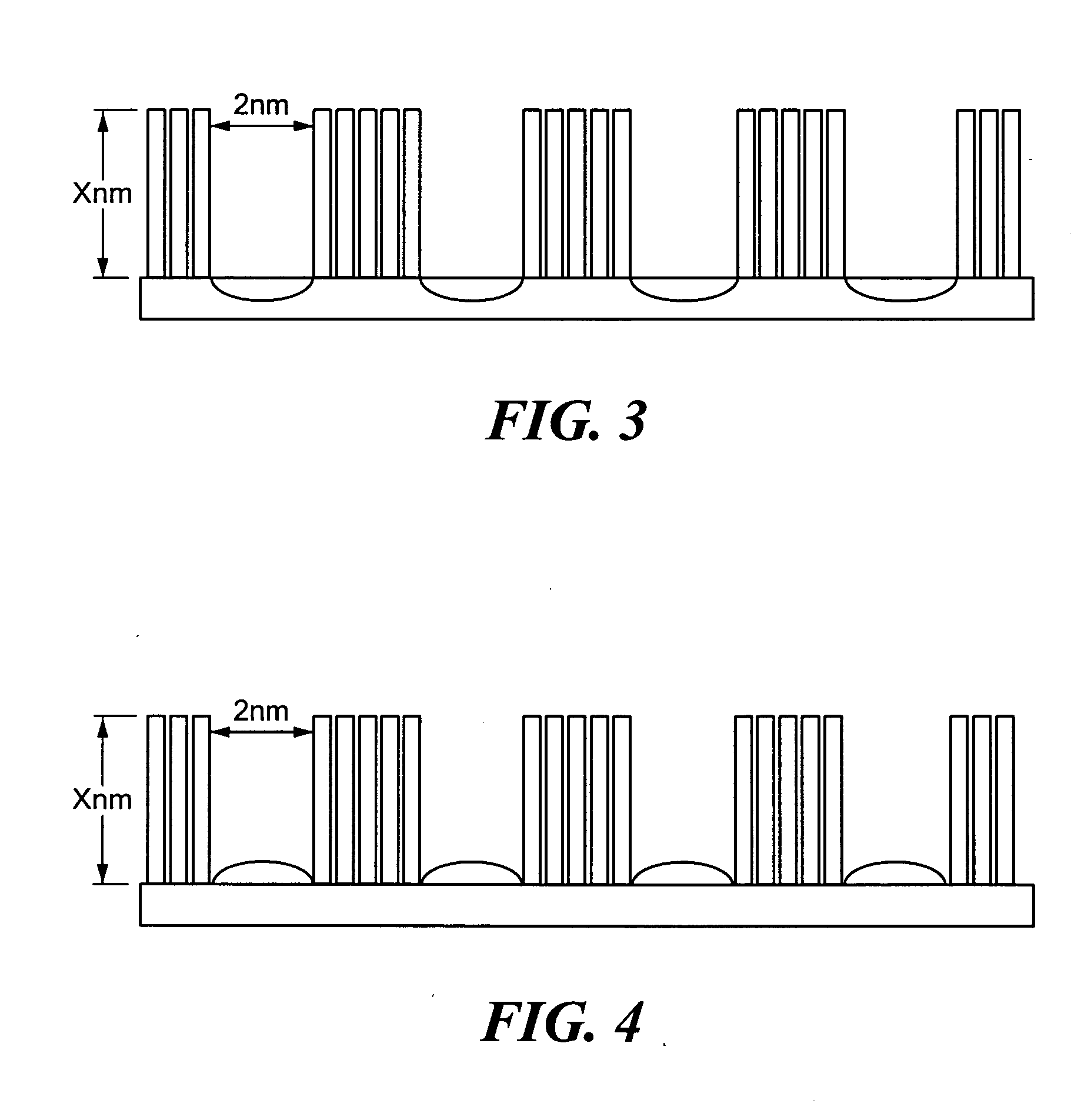Functionalized nanosubstrates and methods for three-dimensional nanoelement selection and assembly
- Summary
- Abstract
- Description
- Claims
- Application Information
AI Technical Summary
Benefits of technology
Problems solved by technology
Method used
Image
Examples
Embodiment Construction
The present invention provides a functionalized nanosubstrate or “nanotemplate” that is useful for selectively assembling nanoelements across a large area. The nanotemplate is capable of guiding the self-assembly of nanoelements to fabricate a three-dimensional nanostructure. Nanoelements can also be transferred at a high-rate from the template to a recipient substrate. Examples of these nanoelements include, but are not limited to, carbon nanotubes, nanocrystals, dendrimers, nanoparticles, nanowires, biological materials, proteins, molecules and organic nanotubes.
A nanotemplate can be prepared from a substrate having a known topology. Different nanosubstrate topologies include, for example, atomic and molecular vacancy islands formed by gas deposition methods. FIG. 1 is a scanning tunneling microscope (STM) image of an unmodified nanosubstrate having an array of sulfur vacancy islands in a strained submonolayer Ag film on Ru(0001). K. Pohl et al., “Thermal Vibrations of a Two-Di...
PUM
| Property | Measurement | Unit |
|---|---|---|
| Diameter | aaaaa | aaaaa |
| Diameter | aaaaa | aaaaa |
| Size | aaaaa | aaaaa |
Abstract
Description
Claims
Application Information
 Login to View More
Login to View More - R&D
- Intellectual Property
- Life Sciences
- Materials
- Tech Scout
- Unparalleled Data Quality
- Higher Quality Content
- 60% Fewer Hallucinations
Browse by: Latest US Patents, China's latest patents, Technical Efficacy Thesaurus, Application Domain, Technology Topic, Popular Technical Reports.
© 2025 PatSnap. All rights reserved.Legal|Privacy policy|Modern Slavery Act Transparency Statement|Sitemap|About US| Contact US: help@patsnap.com



